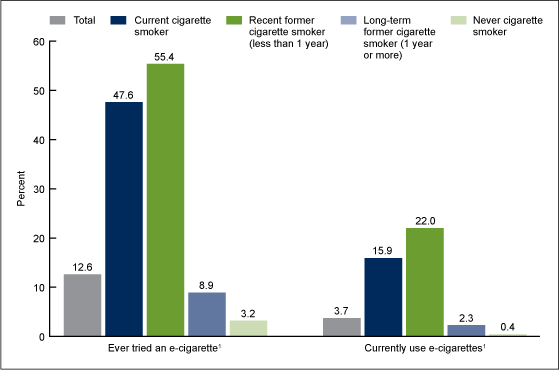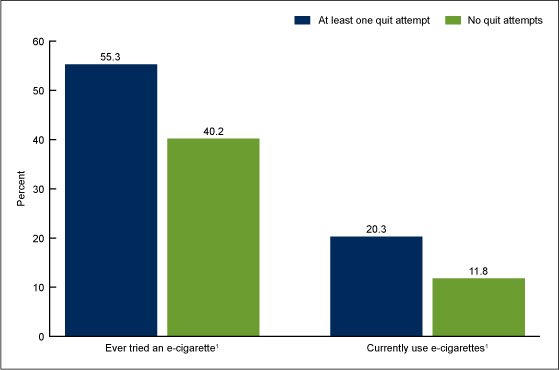New CDC Data Suggest E-Cigarettes Are Helping Smokers Quit
The same survey finds that never-smokers rarely become regular vapers.
People who welcome e-cigarettes as an alternative to the conventional kind hope they will help smokers quit, thereby dramatically reducing the health risks they face. People who fear e-cigarettes worry that vaping will encourage smoking among people who otherwise never would have tried tobacco by getting them hooked on nicotine. New survey data from the U.S. Centers for Disease Control and Prevention (CDC) provide evidence that top officials at that agency are wrong to favor the latter view.
According to the 2014 National Health Interview Survey, 13 percent of American adults have tried an e-cigarette, including 48 percent of current smokers, 55 percent of "recent" quitters (defined as respondents who had last smoked less than a year before the survey), 9 percent of "long-term" quitters (defined as respondents who had last smoked a year or more before the survey), and just 3 percent of people who have never smoked. The same survey found that 4 percent of adults were current e-cigarettes users (meaning they vaped "every day" or "some days"), including 16 percent of current smokers, 22 percent of recent quitters, 2 percent of long-term quitters, and just 0.4 percent of never-smokers.

In other words, never-smokers rarely become regular vapers, which suggests the CDC's fears are misplaced, especially since there is no evidence that never-smokers who vape are therefore more likely to become smokers or that the rising popularity of e-cigarettes has given a boost to conventional cigarettes. To the contrary, vaping and smoking rates are moving in opposite directions. The CDC's survey data suggest that's more than a coincidence: Not only was vaping much more common among current and former smokers than among never-smokers, but current smokers who had tried to quit in the previous year were more likely to be vapers than those who had not.

Specifically, 55 percent of smokers who had tried to quit in the previous year were ever-vapers, compared to 40 percent of smokers who had not tried to quit. The rates for current e-cigarette use were 20 percent and 12 percent, respectively. It looks like e-cigarettes may very well play an important role in moving away from the real thing.
[via Michael Siegel]



Show Comments (35)